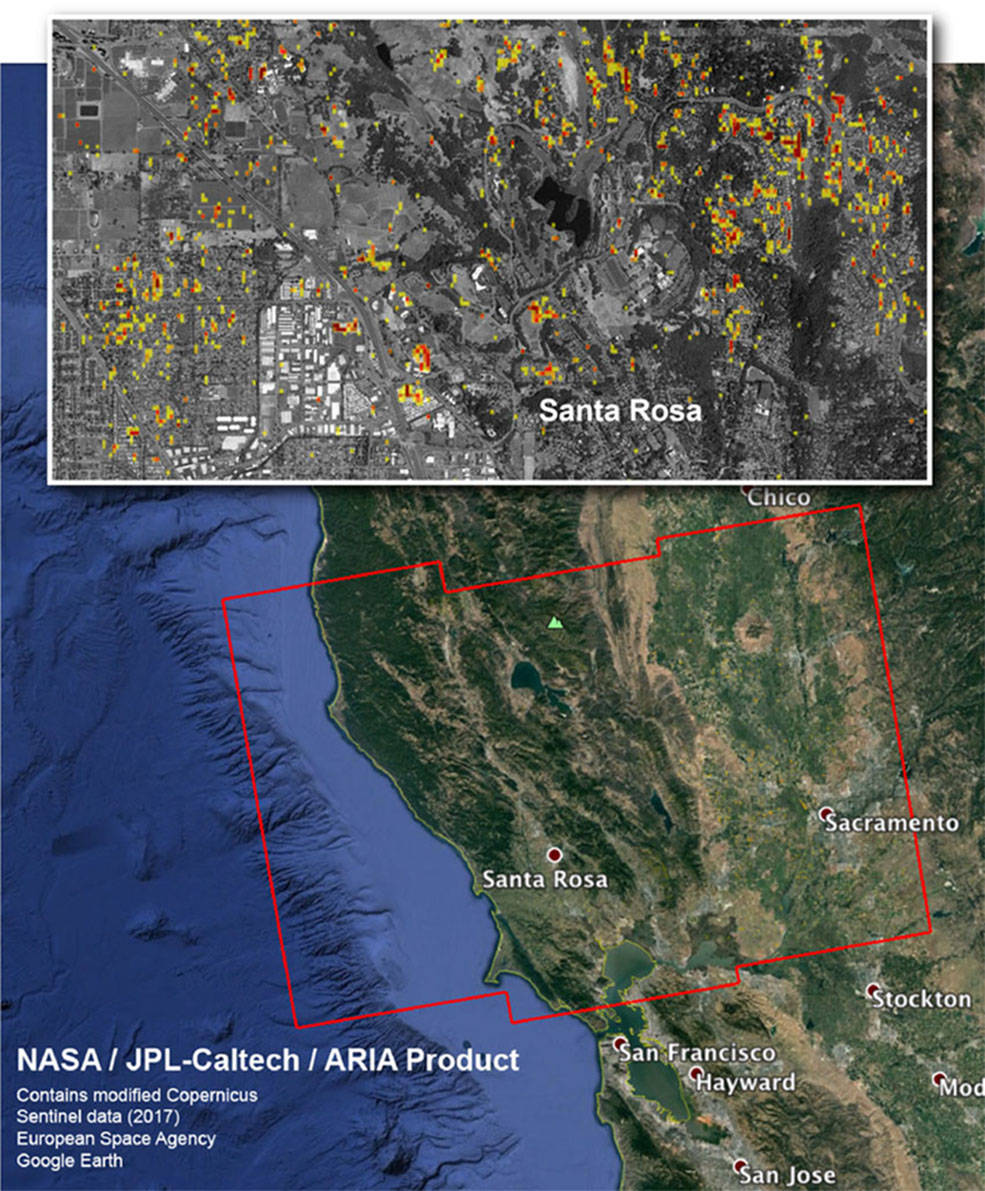NASA Map of Wildfire Damage Helps California Recovery Effort
NASA is using information from Earth-observing satellites to assist in recovery efforts following a series of devastating wildfires in Northern California.
The agency released a "damage proxy map" today (Oct. 19) that provides aerial views of the cities of Sacramento and Santa Rosa (just north of San Francisco) taken before and after the fire outbreaks. The maps provide emergency responders on the ground with a better idea of where the fires inflicted the most damage.
"The map has been provided to various agencies to aid in the wildfire response," NASA officials wrote in a blog post. The map is best used to show damage in areas populated by homes, rather than wilderness area, according to the blog post. Colored areas show the severity of the damage, a spectrum from yellow to red.

The map was produced by scientists with the Advanced Rapid Imaging and Analysis (ARIA) Project for Natural Hazards at NASA's Jet Propulsion Laboratory and the California Institute of Technology, both in Pasadena, California. The scientists built the map using synthetic aperture radar (SAR) images taken by the Copernicus Sentinel-1 satellites, operated by the European Space Agency (ESA). The agency provided similar damage proxy maps to emergency responders in Puerto Rico following the devastation created by Hurricane Maria in September.
NASA has been using its own fleet of satellites to keep an eye on the fires since they erupted in California's wine country on Oct. 8. Authorities are now reporting that approximately 7,000 homes and structures in California have been destroyed by the fires.
Follow Calla Cofield @callacofield. Follow us @Spacedotcom, Facebook and Google+. Original article on Space.com.
Get the Space.com Newsletter
Breaking space news, the latest updates on rocket launches, skywatching events and more!
Join our Space Forums to keep talking space on the latest missions, night sky and more! And if you have a news tip, correction or comment, let us know at: community@space.com.

Calla Cofield joined Space.com's crew in October 2014. She enjoys writing about black holes, exploding stars, ripples in space-time, science in comic books, and all the mysteries of the cosmos. Prior to joining Space.com Calla worked as a freelance writer, with her work appearing in APS News, Symmetry magazine, Scientific American, Nature News, Physics World, and others. From 2010 to 2014 she was a producer for The Physics Central Podcast. Previously, Calla worked at the American Museum of Natural History in New York City (hands down the best office building ever) and SLAC National Accelerator Laboratory in California. Calla studied physics at the University of Massachusetts, Amherst and is originally from Sandy, Utah. In 2018, Calla left Space.com to join NASA's Jet Propulsion Laboratory media team where she oversees astronomy, physics, exoplanets and the Cold Atom Lab mission. She has been underground at three of the largest particle accelerators in the world and would really like to know what the heck dark matter is. Contact Calla via: E-Mail – Twitter









